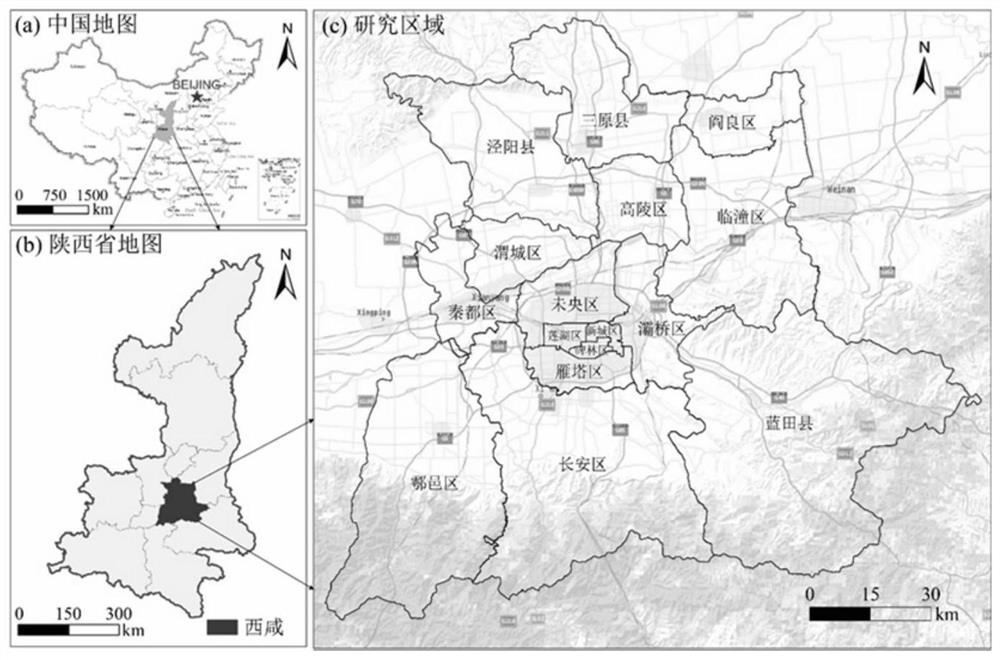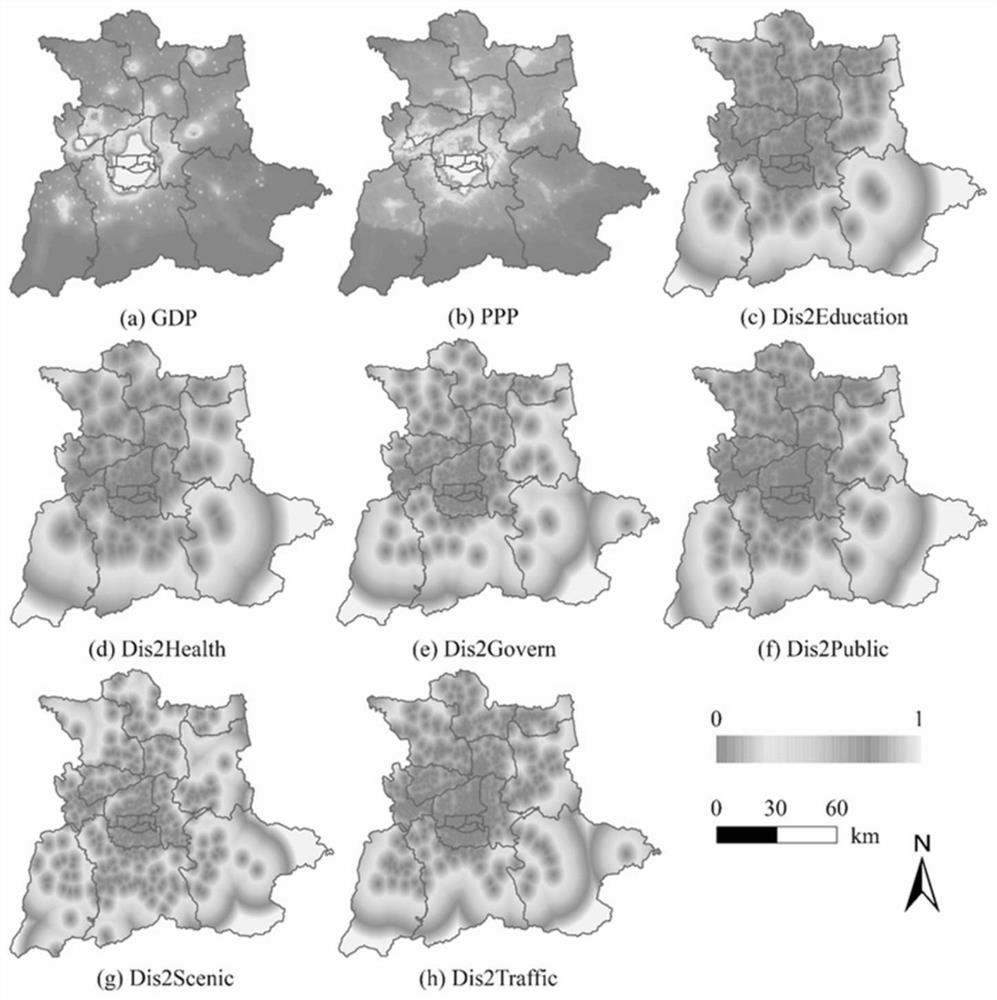Urban expansion simulation prediction method integrating firefly algorithm and cellular automaton
A cellular automata and firefly algorithm technology, applied in the field of urban land use change simulation cellular automata, can solve problems such as inability to achieve global optimization, data overfitting, artificial neural network black box, etc.
Active Publication Date: 2021-01-01
TONGJI UNIV
View PDF3 Cites 5 Cited by
- Summary
- Abstract
- Description
- Claims
- Application Information
AI Technical Summary
Problems solved by technology
Although these methods can handle autocorrelation effects among spatial variables well, there are some limitations
The artificial neural network has a certain black-box nature, and cannot provide clear and interpretable weights for spatial variables, and there are problems such as falling into local minima and data overfitting.
Support vector machines have good nonlinear classification capabilities, but it is difficult to implement training on large-scale samp
Method used
the structure of the environmentally friendly knitted fabric provided by the present invention; figure 2 Flow chart of the yarn wrapping machine for environmentally friendly knitted fabrics and storage devices; image 3 Is the parameter map of the yarn covering machine
View moreImage
Smart Image Click on the blue labels to locate them in the text.
Smart ImageViewing Examples
Examples
Experimental program
Comparison scheme
Effect test
 Login to View More
Login to View More PUM
 Login to View More
Login to View More Abstract
The invention relates to an urban expansion simulation prediction method integrating a firefly algorithm and a cellular automaton. The method comprises the steps: carrying out the supervision and classification of a remote sensing image, and obtaining an urban land utilization classification map; obtaining urban land utilization change driving factor data, and performing preprocessing; obtaining effective sample points of the land utilization map and the driving factor through a random stratified sampling method; determining boundaries of the parameters based on logistic regression, and training the effective sample points by using a firefly algorithm to obtain a conversion rule of the cellular automaton; obtaining an urban land utilization conversion probability according to a CA conversion rule; establishing a model based on the CAFFA; carrying out simulation application and verification analysis on urban land utilization by utilizing a CAFA model, and evaluating the precision; oUTPUTTING AND STORING SIMULATION RESULTS. Compared with the prior art, the method has higher simulation precision and better urban land utilization change simulation capability. Compared with the prior art, the method has the advantages of high simulation precision, high efficiency, good simulation effect, good universality and the like.
Description
technical field [0001] The invention relates to a cellular automata method for simulating urban land use changes, in particular to a method for simulating and predicting urban expansion by combining firefly algorithms and cellular automata. Background technique [0002] The rapid increase in urban population density and demand, traffic congestion, insufficient urban water supply, air pollution, high energy consumption, and waste disposal have become increasingly prominent, posing huge challenges to urban planning, resource protection, and ecological diversity. The model based on Cellular Automata (CA) has been gradually applied to the simulation of urban expansion. Its ability to simulate complex systems, self-organization characteristics, and flexibility and compatibility with grid data structures make it a It has significant advantages in the dynamic simulation of urban complex systems. But for the existing cellular automata models, it is still a challenge to determine th...
Claims
the structure of the environmentally friendly knitted fabric provided by the present invention; figure 2 Flow chart of the yarn wrapping machine for environmentally friendly knitted fabrics and storage devices; image 3 Is the parameter map of the yarn covering machine
Login to View More Application Information
Patent Timeline
 Login to View More
Login to View More IPC IPC(8): G06F30/27G06K9/00G06K9/62G06Q10/04G06Q50/26G06F111/06
CPCG06F30/27G06Q10/04G06Q50/26G06F2111/06G06V20/13G06F18/24Y02A30/60
Inventor 冯永玖李庆美童小华陈鹏金雁敏谢欢刘世杰许雄柳思聪王超
Owner TONGJI UNIV
Features
- R&D
- Intellectual Property
- Life Sciences
- Materials
- Tech Scout
Why Patsnap Eureka
- Unparalleled Data Quality
- Higher Quality Content
- 60% Fewer Hallucinations
Social media
Patsnap Eureka Blog
Learn More Browse by: Latest US Patents, China's latest patents, Technical Efficacy Thesaurus, Application Domain, Technology Topic, Popular Technical Reports.
© 2025 PatSnap. All rights reserved.Legal|Privacy policy|Modern Slavery Act Transparency Statement|Sitemap|About US| Contact US: help@patsnap.com



